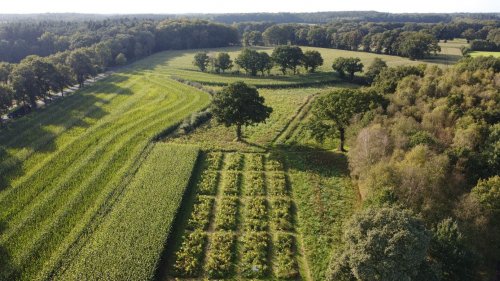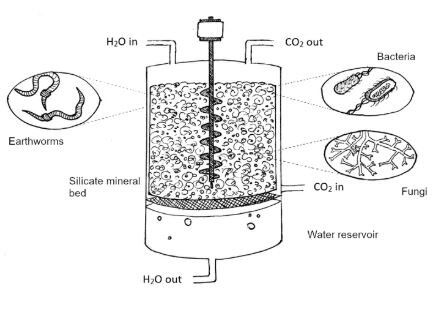Belgium (Universiteit Antwerpen) European project on climate change

A newly funded European research consortium investigates whether a low-energy solution for carbon capture can be designed using an ooze of rocks, fungi, bacteria and earthworms. The consortium is led by UAntwerpen, and is funded by a prestigious grant of the European Innovation Council.
Silicate weathering is a natural process, involving the reaction of minerals like basalt, clays or olivine with water and CO2. The slow mineral weathering controls atmospheric CO2 concentrations on very long time scales, too long for counteracting current increasing atmospheric CO2 concentrations. Scientists worldwide are trying to speed up this process, by grinding these silicates and exposing them to enhanced weathering in e.g. agricultural fields or coastal zones. The ‘Enhanced Silicate Weathering’ (ESW) can thus act as a CO2 removal technology (CDR), that helps us actively take CO2 from the atmosphere for climate change mitigation. It is now clear that such technologies will be needed on top of fast and strong reductions in greenhouse gas emissions, if we want to keep warming below the 2°C limit.
The BAM! project now takes a new angle to ESW. Project coordinator Sara Vicca (UAntwerpen, Global Change Ecology Centre): “The BAM! consortium, that consists of a multidisciplinary team of biologists, geologists, soil scientists, reactor engineers and AI specialists, decided to ‘push the reset button’ for ESW, going back to the basics of weathering. We want to see whether we can artificially increase weathering rates to unprecedented levels at a reactor scale. We want to transform ESW so that we can achieve carbon capture directly at CO2 emission sources, rather than in the natural environment. Our ambitious goal is to pave the way for a cheap and energy-efficient technology to get rid of CO2 before it even enters the atmosphere”.
The team brings together scientists from UAntwerpen, University of Hamburg, Uppsala University and Wageningen University. The key novelty of BAM! is the focus on biology. BAM! will bring organisms and rocks together in a bioreactor to find out whether combinations exist that show levels of weathering unseen in any other low-energy environment. In nature, weathering of silicates is speeded up strongly by plants, fungi, bacteria and earthworms. But rather than increasing the weathering rates 10-fold, BAM! aims for increases of 3-4 orders of magnitude, by uncovering synergies yet unknown to science.
Siegfried Vlaeminck (UAntwerpen, Bioscience Engineering) is responsible for the reactor design. “It’s a challenge in many regards”, he emphasizes. “We need to keep micro- and mesobiota alive in a reactor, providing them with just the right levels of food, CO2, water and oxygen, in order to achieve a maximal uptake of CO2. This brings biology to reactor design in a unique way: we do not focus on one species nor on a bacteria community only. No, we need to optimize the environment in the reactor for a type of mini-ecosystem, which is quite the challenge.”
For fast analysis and progress, the BAM! team counts on the AI-scientists of imec, led by Tim Verdonck. “We want to connect an intelligent computer system to the reactor, that continuously analyses weathering rates and what is driving them. In the last stages of the project, this computer should be able to steer the processes itself, for instance by adapting water flow and CO2-flow rates, or adapting the pH. This is key to optimizing the weathering rates and achieving the ambitious end-goals.”

The results of BAM! can also be used to optimize the field experiments with ESW. In this regard, the potential synergies with e.g. the newly granted C-Farms project are noteworthy. C-Farms, also coordinated by the UAntwerpen Global Change Ecology Centre, is among the first projects to combine different agricultural CO2 uptake technologies at field scale, with direct involvement of different stakeholders, including farmers’ organisation, government agencies and steel industry. It focuses on circular sources of minerals for ESW (steel slags, concrete waste) and other soil-based negative emission technologies. Sara Vicca: “The BAM! results provide a kick-start for C-Farms, as we can start experimental design from the achieved knowledge. We can thus communicate on potential and challenges to stakeholders even before we start with the field trials.”
A more detailed press text can be found on:
https://www.uantwerpen.be/en/research-groups/global-change-ecology/news/bam-eic/
